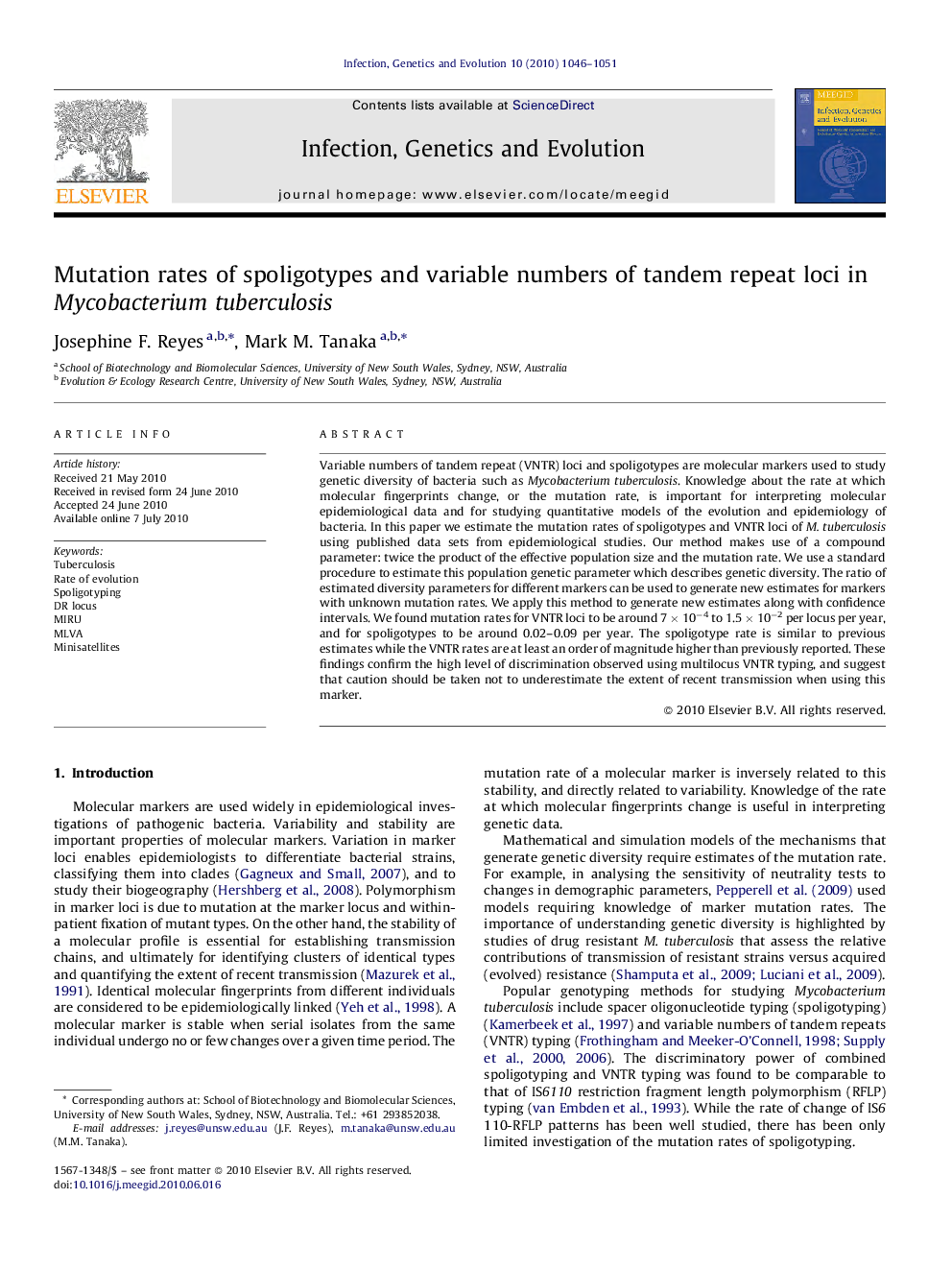| کد مقاله | کد نشریه | سال انتشار | مقاله انگلیسی | نسخه تمام متن |
|---|---|---|---|---|
| 2823215 | 1161377 | 2010 | 6 صفحه PDF | دانلود رایگان |

Variable numbers of tandem repeat (VNTR) loci and spoligotypes are molecular markers used to study genetic diversity of bacteria such as Mycobacterium tuberculosis. Knowledge about the rate at which molecular fingerprints change, or the mutation rate, is important for interpreting molecular epidemiological data and for studying quantitative models of the evolution and epidemiology of bacteria. In this paper we estimate the mutation rates of spoligotypes and VNTR loci of M. tuberculosis using published data sets from epidemiological studies. Our method makes use of a compound parameter: twice the product of the effective population size and the mutation rate. We use a standard procedure to estimate this population genetic parameter which describes genetic diversity. The ratio of estimated diversity parameters for different markers can be used to generate new estimates for markers with unknown mutation rates. We apply this method to generate new estimates along with confidence intervals. We found mutation rates for VNTR loci to be around 7 × 10−4 to 1.5 × 10−2 per locus per year, and for spoligotypes to be around 0.02–0.09 per year. The spoligotype rate is similar to previous estimates while the VNTR rates are at least an order of magnitude higher than previously reported. These findings confirm the high level of discrimination observed using multilocus VNTR typing, and suggest that caution should be taken not to underestimate the extent of recent transmission when using this marker.
Journal: Infection, Genetics and Evolution - Volume 10, Issue 7, October 2010, Pages 1046–1051